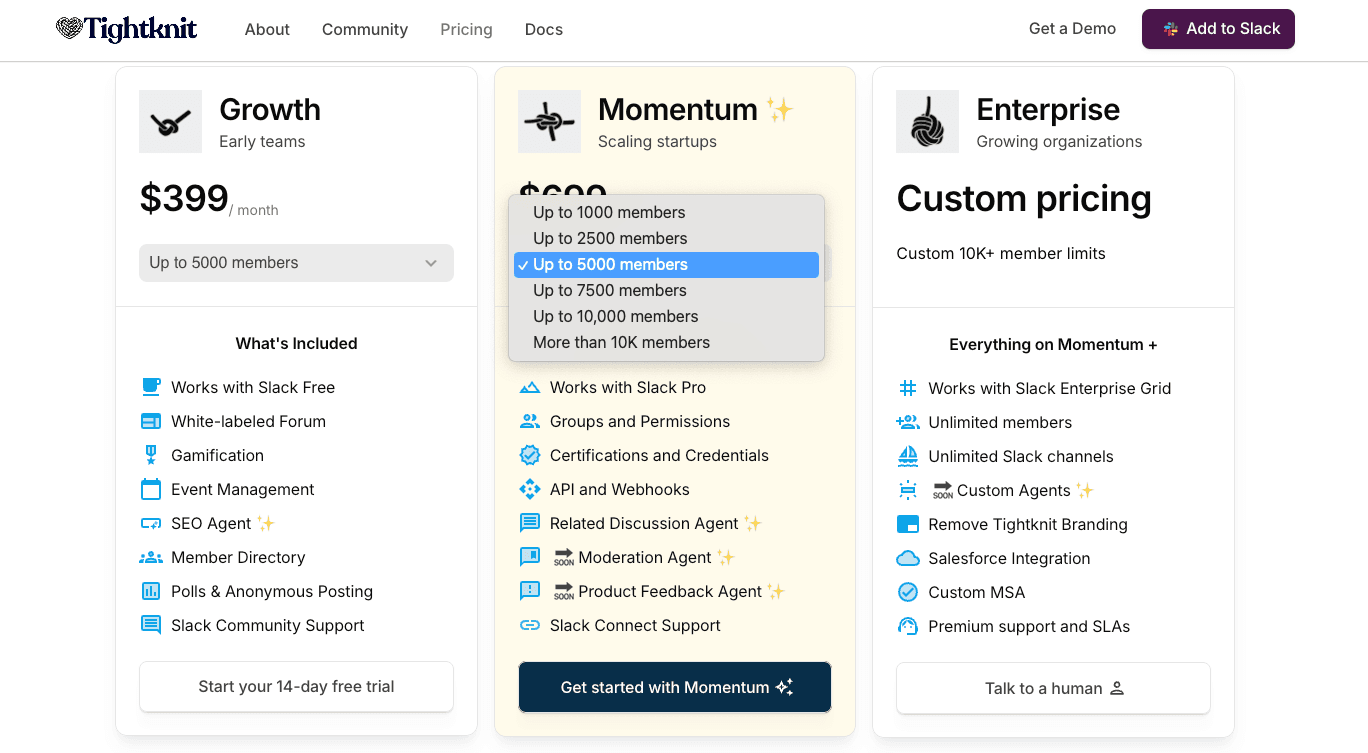TL; DR: Tiered pricing (aka volume or graduated pricing) lowers unit cost as usage grows. It rewards heavy users with lower per-unit prices. Tiered pricing works well where you want self-serve clarity early and predictable scale economics later (e.g. AI requests, emails/SMS sent, T-shirts printed).
Tiered pricing, also called volume pricing or graduated pricing, is how you build bulk discounts into usage. Instead of one flat rate, the price declines based on a set of predefined tiers. This provides the same "pay what you use" benefit to most customers, while rewarding your larger customers with better per unit costs.
This plays especially well for AI and other high-frequency use products (e.g. software infrastructure, email automation). An LLM API might price the first 50k requests at $0.002 each and then drop to $.001 for subsequent requests. Outside of software, think retail multipacks where the per-unit price drops on a 24-pack vs a single box, or custom T-shirt where larger runs mean lower cost shirts.

Tiered pricing shows up across industries and business. Here are a few examples we pulled.
Business cards (volume): Vistaprint/MOO lower the per-card price at higher quantities (e.g., MOO shows ~$0.44/card at 50 vs ~$0.25 at 1,000).
Grocery Stores (volume): Shelf unit pricing lets you compare cost per ounce; larger sizes often have a lower unit price.
SaaS messaging, Twilio SMS (graduated): Published US volume tiers reduce the per message rate as monthly volume crosses thresholds.
Cloud storage, AWS S3 (graduated): $0.023/GB for the first 50 TB/month, $0.022/GB for the next 450 TB, $0.021/GB after that.
Tightknit, Community Membership: Tightknit has tiers based on the size of the community they help you manage.

Tiered pricing is still usage-based like pay-as-you-go, but it bakes in bulk discounts. Small usage stays affordable and flexible, while bigger workloads get better rates without custom deals.
Better economics & predictability
Decreasing marginal price encourages adoption without crushing profits
Customers can forecast spend with a simple mental model (and you can surface effective $/unit in-product).
Smoother path from self-serve to enterprise
Lets you publish list prices yet mirror enterprise “buy more, pay less” expectations without bespoke discounts on day one.
Gives sales a predictable lever to negotiate at higher volumes.
Plays nicely with commits/overages if you need them later.
Operationally cleaner
Users move between usage tiers as usage increases without needing to switch plans.
A standard discount curve replaces one-off pricing spreadsheets; fewer exceptions to implement, migrate, and support.
Easy to iterate into from PAYG to keep pricing competitive for higher usage customers
Spiky AI usage makes flat PAYG feel risky. Tiered pricing offers the same simplicity with built-in bulk discounts as volume rises.
Fits common AI meters: requests/tokens/minutes, images/pages for OCR/vision, vector storage, and queries; easy to reason about at low and high volumes.
Controls bill shock during spikes: clear thresholds and effective per-unit costs soften sudden traffic or adoption surges.
Passes backend savings without re-pricing: as you optimize your product (quantization, batching, cheaper models), customers naturally see better unit economics at higher tiers.
Works for product-led and sales-led growth: published tiers for developers; sales has predictable levers (commits + tiered overage) for bigger deals.
Keeps incentives aligned per feature: discount the specific features that drive value without bespoke contracts.
Tiered pricing keeps PAYG’s flexibility but bakes in bulk discounts. It's a common pricing pattern found throughout AI, SaaS, and everyday life.
If you're interested in learning more, checkout our deeper dive into tiered pricing and when to use it.